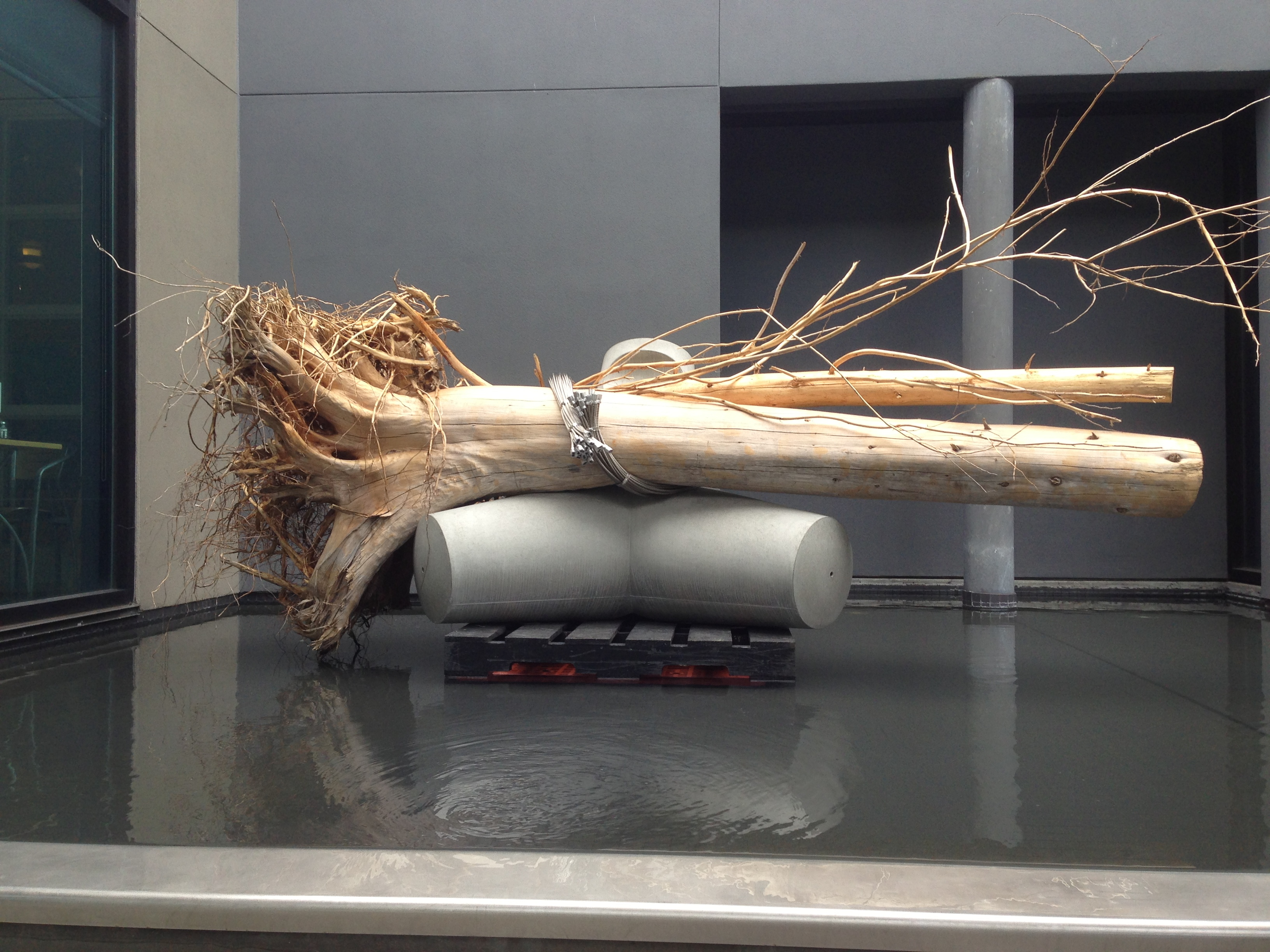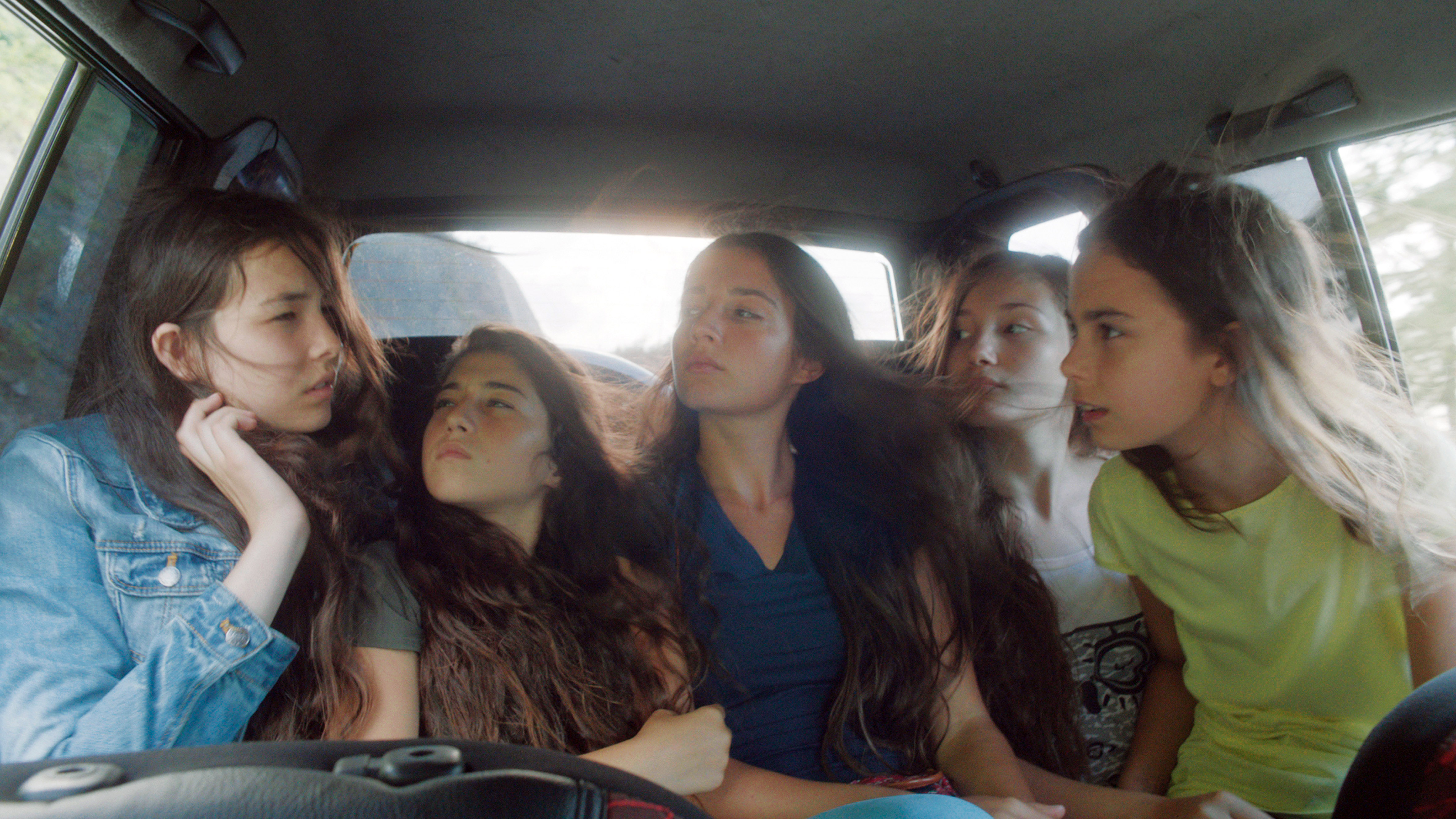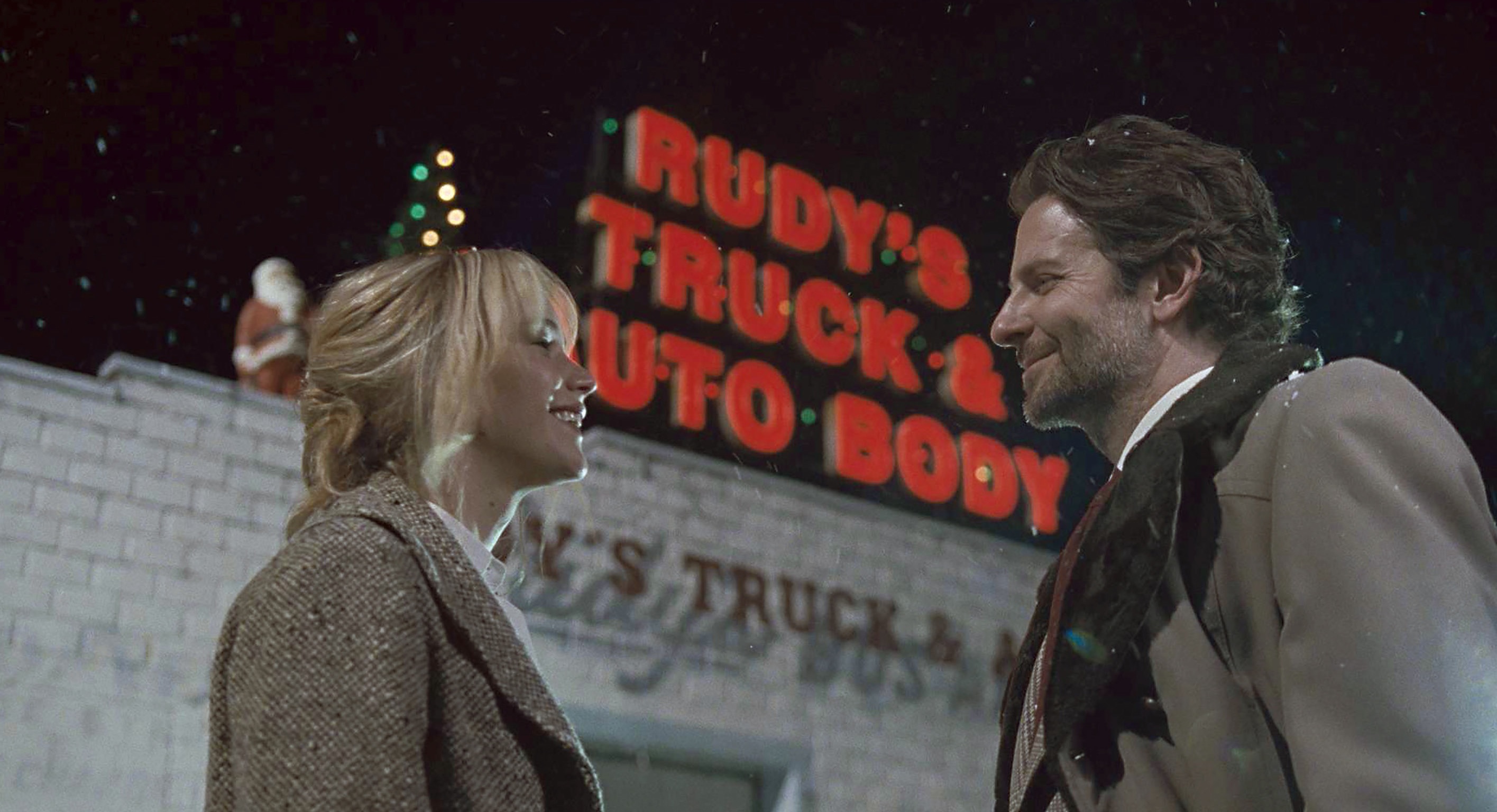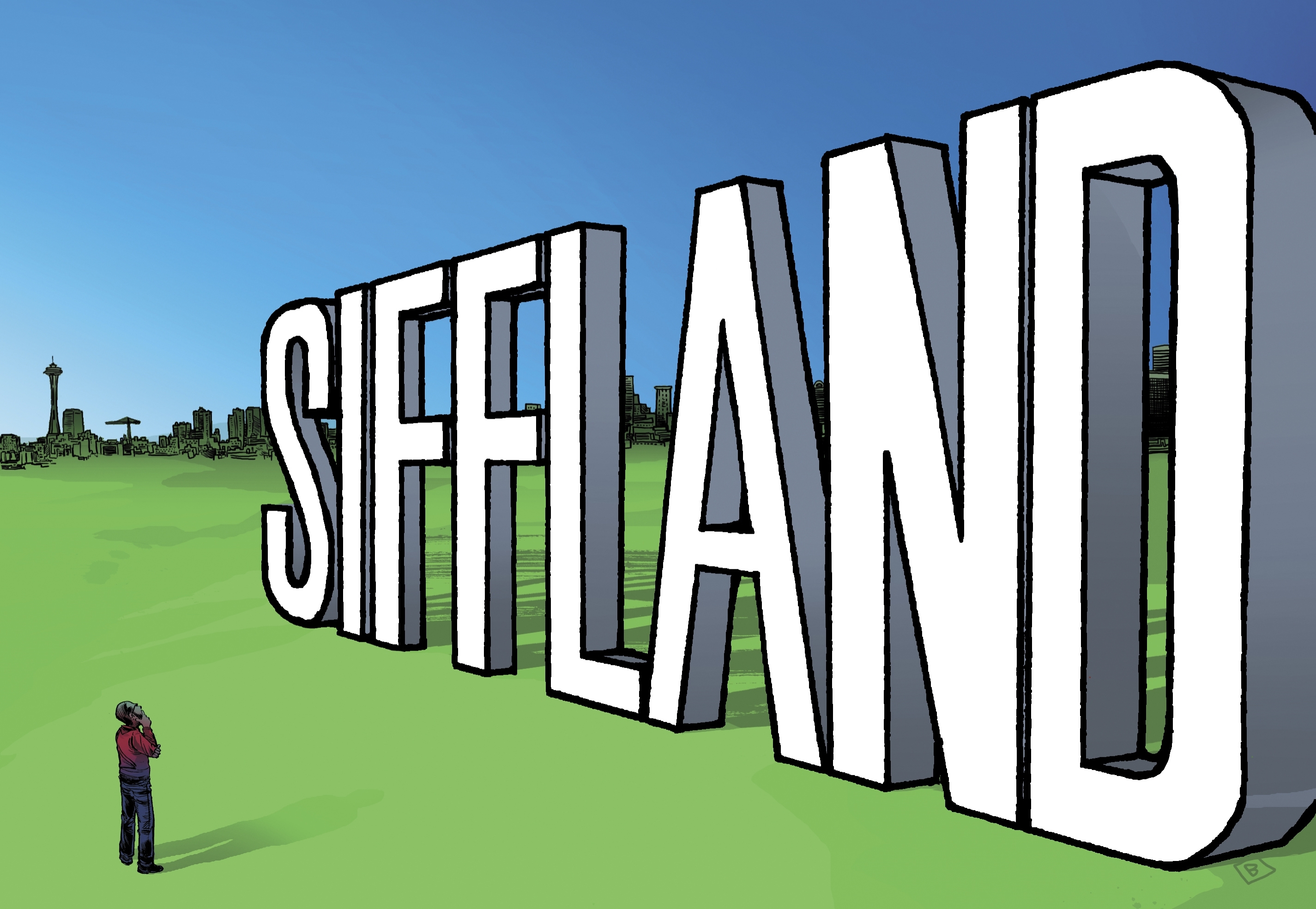Some visual artists leave behind pretty objects or precious trophies for millionaires to collect; others make gestures or create concepts that don’t fit so well in the gallery or museum. Born in 1942, Buster Simpson is still very much with us, still making new, environmentally engaged art after some four decades in the Northwest. (He came here from Michigan by way of the Pilchuck Glass School.) In his first career retrospective, including over 50 pieces selected by the Frye’s Scott Lawrimore, Buster Simpson: Surveyor reveals an artist reluctant to make big, permanent things that would change the habitat where they’re sourced or sited. His work deals directly with local ecology and materials, recycling, and environmental degradation. He’s a zero-sum artist who rearranges things without substantially adding to or subtracting from the ecosystem. There’s a modesty and self-effacement to his creations that the low-key Simpson radiates in person. The paradoxical result of such integrity is that he’s widely respected but not widely collected; he’s left no big public artworks to stamp his name on Seattle. Instead of Hammering Man, he’s the guy who pulls out the nails and applies them to a different purpose.
A perfect example, among a few other unrealized proposals documented at the Frye, is down in Myrtle Edwards Park, just north of the Olympic Sculpture Park and its grand, diagonal impositions upon the landscape. (There in the OSP, Richard Serra’s massive metal Wake starkly contrasts with Simpson’s humility. Do not touch the Wake! Keep your grubby children away!) Back when the future OSP was still a toxic Unocal gasoline-tank depot and the waterfront park hadn’t yet been renamed for the pioneering city councilwoman, the shoreline leading to Smith Cove had been used to dump the rubble from the I-5 trench—hence the creation of a new park in 1964. The city then solicited artists to create attractions that would invite pedestrians along the formerly forbidding stretch. At the Frye, photos from 1974 show Simpson’s Learning Lessons for Myrtle Edwards Park, in which he “proposed a project to redesign the site by simply reorchestrating the rubble,” in Lawrimore’s description. The curator continues, “He wanted the park design to be ‘honest’ about its source material and for the site to reflect and document the city’s own history of progress and renewal.”
But no—instead we got a new totem pole, historical markers, a walking/biking path, some exercise stations, a fishing pier, and an enormous new installation by out-of-town artist Michael Heizer: the three slabs of Adjacent, Against, Upon. Admittedly, this last is one of my favorite public artworks in Seattle, but it required huge alien blocks of material, the introduction of foreign forces upon the habitat, instead of tending or reusing what was already in place. The site’s equilibrium is forever altered. Simpson would never do that. And he never did.
As Simpson moved among various short-term lofts and studios during the ’70s and ’80s, downtown and Belltown began booming around him. Many buildings were torn down, and he took to patrolling Post Alley and other desolate streets in search of scrap materials for his art. From that foraging grew his avatar, the Woodman, depicted in various photos and videos at the Frye. Sometimes he installed Woodman silhouette figures in buildings bound for the wrecking ball. Those creations were ephemeral, made of cheap materials, not necessarily meant to be preserved in a museum or private collection. They’re the products of a leave-no-trace aesthetic.
Walk through Belltown on First and you’ll see some of Simpson’s benches and tree-protecting screens, none screaming for attention. On the sidewalk outside the Frye, his yellow-painted Tree Guards include crutches as a design motif you’ll see elsewhere in his work. Notions of injury and rehabilitation can be discerned through the decades. If something is damaged or broken, a new, adaptive use for it is found. (In 1983, he created an installation at a doomed old tavern in the Pike Place Market; photos and artifacts from the 90 Pine Show are also on view.)
Floating in the Frye’s courtyard entry pool is Secured Embrace, a kind of bulwark against beach erosion, a model and sentinel for sustainable habitat. Simpson would like to see such bundles used in the Seattle waterfront redesign, to help create and protect a natural shoreline. (He’s been commissioned for a role in that project.) It looks like a clump of debris that the Woodman might gather, more gleaning and recycling of material. It also suggests the way waves create their own natural logjams and riffles—the flotsam left at the high-tide line later becomes a defense during flood or storm.
Inside the Frye, we see videos of Simpson’s famous symbolic slingshots against the goliath of the then-new World Trade Center (he’s standing in the rubble field that would later be filled with the condos and office towers of Battery Park City). In another ’80s work, he left unglazed ceramic dinner plates in several polluted waterways (including Elliott Bay), then later retrieved and finished the spotted discs in the kiln. But would you want them on your table or wall? That’s the conundrum for Simpson—most of his pieces are made of other old things, and it’s hard to create something beautiful or valuable out of recycled materials. They always carry the prior, cheaper association of their original use. And the impeccably honest Simpson never attempts to disguise that fact. For that reason, however, he’s been a less salable and collectible artist than, say, his old Pilchuck cohort Dale Chihuly.
New art is by definition “original,” signed and sold by its maker. Simpson, to his credit, borrows everything but the concept. His sculptures and assemblages at the Frye are made of old saw blades, snow shovels, metal fenceposts, teakettles, bits of tin and other scrap metal, beer bottles, TV tubes, his own 60-year-old Boy Scout hatchet, and much reclaimed wood. Simpson’s constant salvaging is an explicit rebuttal to what he calls “our planet’s thirst for consumption” (and by “planet” he means us, those rapacious latecomers to the planet).
When Simpson fought to preserve cherry trees along First Avenue during Seattle’s first condo boom in the late ’70s, some were saved and others cut down. From the latter, he assembled a rough-hewn ladder that leans against a white gallery wall at the Frye. Hardly a pristine art object, it looks like something you might find in back of a garden shed—unlovely, but worth keeping because it still works. It’s an artifact of humble, stoic endurance. You could say the same about Simpson.
bmiller@seattleweekly.com
FRYE ART MUSEUM 704 Terry Ave., 622-9250, fryemuseum.org. Free. 11 a.m.–5 p.m. Tues.–Wed. & Fri.–Sun.; 11 a.m.–7 p.m. Thurs. Closed Mon. Ends Oct. 13.








